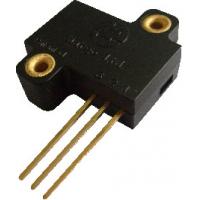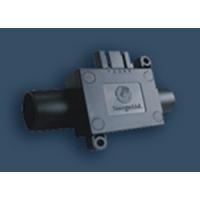What IS Mass flow sensor and How Often Does the Mass Air Flow Sensor Need to Be Replaced?
A mass (air) flow sensor (MAF) is used to find out the mass flowrate of air entering a fuel-injected internal combustion engine.-

FS7002 Mass flow/clog sensors
FS7002 series mass flow/clog sensors can be used for open air space flow measurement or applied for clog sensing in an open space configuration.
There are two common types of mass airflow sensors in use on automotive engines. These are the vane meter and the hot wire. Neither design employs technology that measures air mass directly. However, with additional sensors and inputs, an engine's ECU can determine the mass flowrate of intake air.
Both approaches are used almost exclusively on electronic fuel injection (EFI) engines. Both sensor designs output a 0.0–5.0 volt or a pulse-width modulation (PWM) signal that is proportional to the air mass flow rate, and both sensors have an intake air temperature (IAT) sensor incorporated into their housings for most post OBDII vehicles. Vehicles prior to 1996 could have MAF without an IAT. An example is 1994 Infiniti Q45.
When a MAF sensor is used in conjunction with an oxygen sensor, the engine's air/fuel ratio can be controlled very accurately. The MAF sensor provides the open-loop controller predicted air flow information (the measured air flow) to the ECU, and the oxygen sensor provides closed-loop feedback in order to make minor corrections to the predicted air mass. Also see MAP sensor.
How Often Does the Mass Air Flow Sensor Need to Be Replaced?
-

Mass Flow Sensors
FS1015 Series can measure a flow up to 150 SLPM. ISO-15mm connection model is readily applicable to ventilators and/or anesthesia equipments.
The design and function of the mass air flow sensor
To understand the reason for replacement, you need to know how this mass air flow (MAF) sensor works. The MAF features a sensing element, which tells how much air is flowing through. This element is made either of platinum wire and called a hot wire design or nickel foil grid with the tile of a hot film design. Both are delicate and may be damaged if you try to clean them. For this reason, it’s better to replace the sensor than to attempt to clean it and continue using it.The MAF sensor measures the amount of air that comes into the system. It provides this information to the engine computer, allowing the system to adjust the amount of fuel needed to maintain the correct ratio.
Why an MAF sensor needs to be replaced
If the sensor gets dirty, it won’t be able to read the airflow. When the MAF sensor doesn’t work, the engine may idle roughly, hesitate, and have difficulty starting. It may even stall on you while driving, which is no fun.The most common cause for the sensor to become dirty is an air filter that doesn’t get replaced when needed. When the air filter is clogged, it allows more dirt and debris to slip by and accumulate on the sensor. Routine maintenance and air filter replacement can extend the life of your MAF sensor and ensure it continues to work correctly. While the exact timing varies based on where and how much you drive, a good rule to follow is every 10,000 to 12,000 miles.
Industry Sourcing - isweek.com | Wholesale Industrial Products
没有评论:
发表评论